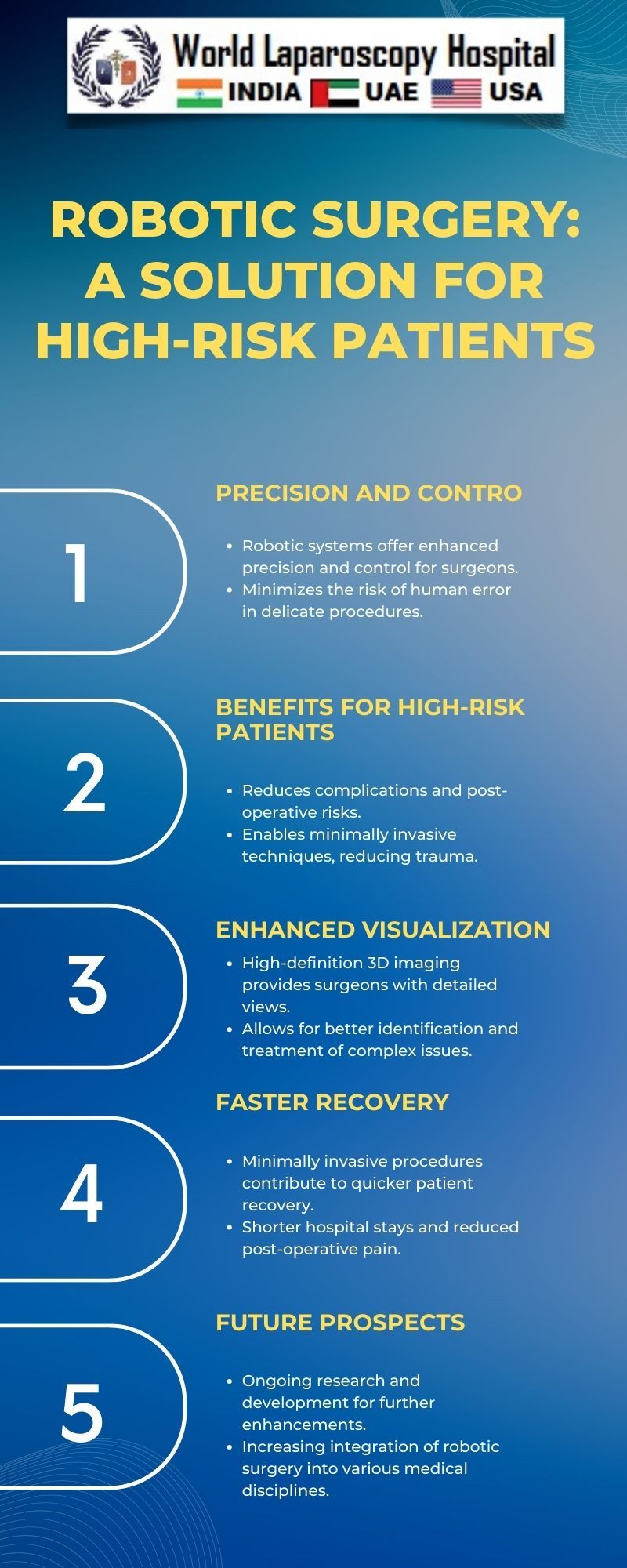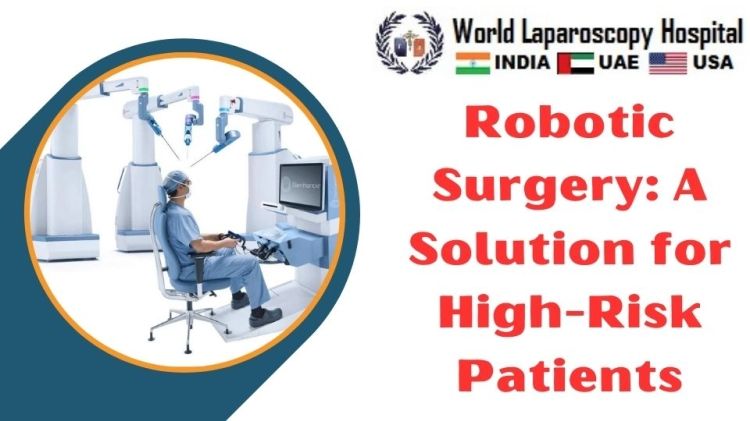Robotic Surgery: A Solution for High-Risk Patients
Introduction:
In the ever-evolving landscape of medical technology, robotic surgery has emerged as a groundbreaking solution, particularly for high-risk patients. This innovative approach to surgery combines the expertise of skilled surgeons with the precision and capabilities of robotic systems, redefining the way complex procedures are performed. As we delve into the realm of robotic surgery, we uncover its transformative impact on patient outcomes, the medical field, and the future of healthcare.

The Evolution of Robotic Surgery:
The roots of robotic surgery can be traced back to the 1980s when the first robotic systems were introduced for medical purposes. However, it wasn't until the late 1990s that the da Vinci Surgical System, developed by Intuitive Surgical, gained prominence as a pioneering robotic platform for surgical procedures. The da Vinci System allowed surgeons to perform minimally invasive surgeries with increased precision, control, and a 3D view of the surgical field.
Robotic surgery has since evolved, with various robotic-assisted systems being developed and adopted across different specialties, such as urology, gynecology, and cardiothoracic surgery. These systems incorporate advanced technologies like artificial intelligence, haptic feedback, and improved imaging, further enhancing their capabilities and widening their applications.
High-Risk Patients and Surgical Challenges:
High-risk patients, often characterized by complex medical conditions or comorbidities, present unique challenges for conventional surgical approaches. Traditional open surgeries may pose increased risks and longer recovery times for these individuals, making the exploration of alternative methods crucial. Robotic surgery has emerged as a viable option for addressing these challenges, offering several advantages that contribute to improved outcomes for high-risk patients.
Minimally Invasive Procedures:One of the primary benefits of robotic surgery is its minimally invasive nature. Unlike traditional open surgeries that involve large incisions, robotic procedures are performed through small incisions, reducing trauma to the surrounding tissues. For high-risk patients who may be more susceptible to complications, this minimally invasive approach can result in less blood loss, decreased pain, and a quicker recovery.
Enhanced Precision and Visualization:Robotic systems provide surgeons with enhanced precision and a three-dimensional view of the surgical field. The robotic arms mimic the surgeon's hand movements with greater dexterity, allowing for intricate maneuvers in tight spaces. This level of precision is particularly valuable when operating on high-risk patients with intricate anatomies or complex conditions.
Reduced Complications:The minimally invasive nature and precise control offered by robotic surgery contribute to a reduction in postoperative complications. High-risk patients, often prone to infections and delayed healing, benefit from the smaller incisions and minimized disruption of surrounding tissues, leading to a lower risk of complications such as infections and wound-related issues.
Applications in Various Specialties:
Robotic surgery has found success and acceptance in a myriad of medical specialties, demonstrating its versatility in addressing the diverse needs of high-risk patients.
Cardiothoracic Surgery:In cardiothoracic procedures, such as coronary artery bypass grafting (CABG) and mitral valve repair, robotic systems have proven to be effective tools for surgeons. The precision afforded by robotic arms allows for delicate maneuvers, reducing the risk of damage to surrounding tissues and improving outcomes for high-risk patients with cardiac conditions.
Urology:In urological surgeries, such as prostatectomies and nephrectomies, robotic systems enable surgeons to navigate complex anatomy with enhanced vision and control. High-risk patients with urological cancers or conditions benefit from the minimally invasive approach, experiencing reduced pain and a faster return to normal activities.
Gynecology:Gynecological procedures, including hysterectomies and myomectomies, have witnessed a shift towards robotic-assisted surgery. The precise movements of robotic arms enhance the surgeon's ability to perform intricate procedures, offering high-risk patients in the field of gynecology a safer and more efficient option.
General Surgery:Even in general surgery, robotic systems have made inroads, providing solutions for high-risk patients undergoing procedures such as colorectal surgeries, bariatric surgeries, and complex abdominal surgeries. The adaptability of robotic technology allows for its application across a wide spectrum of surgical interventions.
Challenges and Limitations:
While robotic surgery presents numerous advantages, it is not without challenges and limitations. The initial cost of acquiring and implementing robotic systems, along with the need for specialized training for surgeons, can pose barriers to widespread adoption. Additionally, concerns regarding the lack of tactile feedback and the potential for technical malfunctions during surgery highlight the importance of continued refinement and innovation in robotic technology.
The Future of Robotic Surgery:
As technology advances and robotic systems become more sophisticated, the future of robotic surgery holds tremendous promise. Integration with artificial intelligence (AI) is on the horizon, with the potential to enhance surgical planning, decision-making, and even autonomous procedures. Continued research and development will likely address current limitations and expand the applications of robotic surgery, making it an increasingly integral part of the medical landscape.
Conclusion:
Robotic surgery has emerged as a transformative solution for high-risk patients, revolutionizing the field of surgery and improving outcomes across various specialties. The combination of minimally invasive procedures, enhanced precision, and reduced complications positions robotic surgery as a viable option for individuals with complex medical conditions. As technology continues to advance, the future of robotic surgery holds exciting possibilities, promising further innovations and improved healthcare for high-risk patients around the world.
